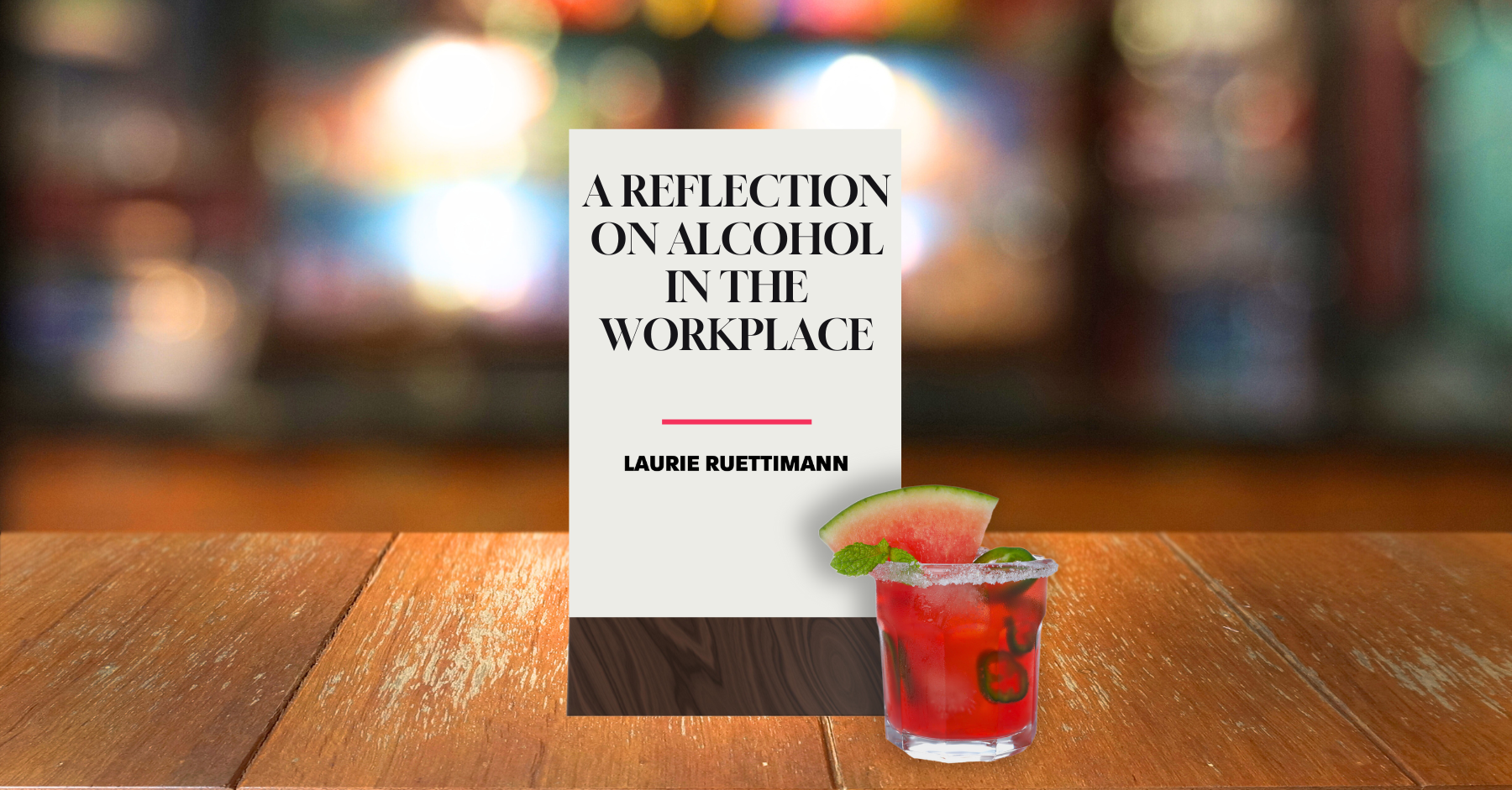
Want to learn about my new book? It’s called “Corporate Drinker.”
I’ve been in HR for over 25 years. I’m old enough to see how trends ebb and flow. Right now, everybody is talking about work and alcohol.
Back in the day, alcohol and the workplace were intertwined. Farmers quenched their thirst after a hot day. Factory workers shared a pint as a bonding ritual or even a precursor to unionization. Executives wielded their power over a drink, sales reps entertained clients over long lunches, and even personnel managers escaped the office (and its annoying employees) to grab a slice of pizza and a cold beer. Work drinkin’ held a spot on our collective calendars.
However, by the mid-1990s, the tide shifted. Workplace drinking lost its appeal—not due to decreased networking or team building—but because corporate productivity and efficiency took center stage. As the wildness of the ’80s gave way to stricter company policies, the focus moved from corporate abundance to scarcity. Personnel was rebranded as HR. Attention was turned to reducing health and benefits costs, implementing sexual harassment training, and introducing concepts like affirmative action and inclusion, even though nobody would take that seriously for decades. As a result, drinking at work became riskier. Sure, the powerful continued to indulge, but the era of three-martini lunches for directors and middle managers was essentially over.
Despite these changes, the transformation of alcohol in the workplace was superficial. So, “Corporate Drinker” explores alcohol’s intricate relationship with the workplace, its historical and global role, and its impact on employees. Some workers love knocking back margaritas and bottomless mimosas with colleagues. Others have rich, complex lives outside their jobs and prefer to go home and enjoy time away from the office. However, to this day, drinkers have more opportunities than non-drinkers. For all the work we’ve done on inclusion and belonging, this shouldn’t be possible. But tell that to Chad, who’s rounding up a crew to hit the dueling pianos bar on a Tuesday night.
The book also underscores how alcohol affects individual work performance. I question why companies invest heavily in inclusion, wellness programs, and harassment training only to undermine these efforts with alcohol-fueled events. It’s impossible to perform optimally and create psychologically safe work environments when alcohol exacerbates power differentials and impairs judgment with only just one drink.
I’ll acknowledge my biases as an HR leader with nearly three decades of experience. I’ve had a drunk employee ask me if he’d qualify for workers’ compensation if he slipped and fell at a holiday party, only to see him sit down at a table and look for an opportunity to slip and fall. But I know most people will never develop an alcohol use disorder, and banning drinking outright is extreme. Plus, I like to drink champagne with my fellow HR ladies and tell horror stories from our time in the trenches.
Still, the implications of alcohol consumption at work demand a balanced consideration. Workers are adults; we hire them to solve problems in exchange for a paycheck. However, they bring their complete selves to work—trauma and all. That’s why “Corporate Drinker” prioritizes fostering responsible corporate behavior and healthy workplace cultures. Leaders must look beyond the happy hour, boozy holiday parties, and informal after-work cocktail hours as the primary means of promoting team cohesion, collaboration, and innovation. Encouraging employees to be self-leaders with individual accountability—and then to go home and focus on their well-being outside work—can lead to happier and more productive individuals.
And the book also delves into the specific challenges that remote workers face, explores policies to address alcohol use disorder, and shares narratives of professionals who have chosen to limit or eliminate alcohol from their lives and how it’s negatively impacted their career progression.
I’ve been around long enough to have watched people return from lunch and barf in the bathroom. Fine, okay, that was me. And I have seen the workplace transform in admirable ways. But sometimes, it feels like everything old is new again. People are returning to the office. Managers are trying new ways to include younger workers in team activities. And conferences in cities like Orlando and Las Vegas are back with wild abandon. Yet, for all the talk of inclusion and belonging, many of us are right back where we started: drunk with our colleagues, misbehaving, and saying stupid shit we later regret.
It is exhausting, and I’m sick of it. I prefer to write about anything other than insensitive corporate leaders, lecherous managers, and co-workers who drink too much because of toxic corporate cultures and end up racking up DUIs and jail time. Enabling a culture of corporate drinkers is bad for business. Being a corporate drinker is a depressing, helpless state that negatively impacts your professional career, personal relationships, and overall well-being.
So, “Corporate Drinker” concludes with a strong call to action, urging leaders to evaluate how alcohol intersects with the workplace. By transitioning from an alcohol-dependent culture to a more inclusive workspace, organizations can meet the moment with their employees and meet the challenges of modern times.
That’s what this is all about. Are you interested in learning more? Then, here’s your next move: Sign up for my Sunday newsletter and watch for more #CorporateDrinker book and podcast news!
You must be logged in to post a comment.